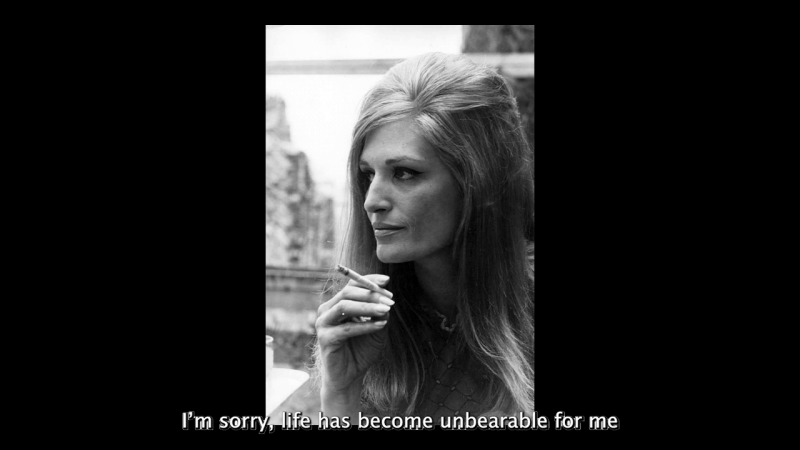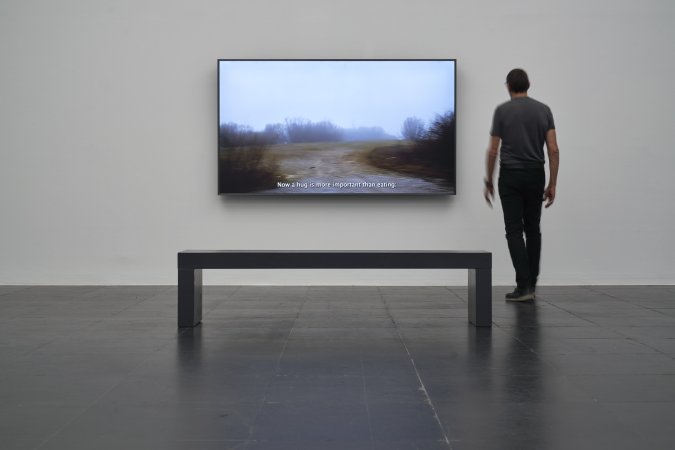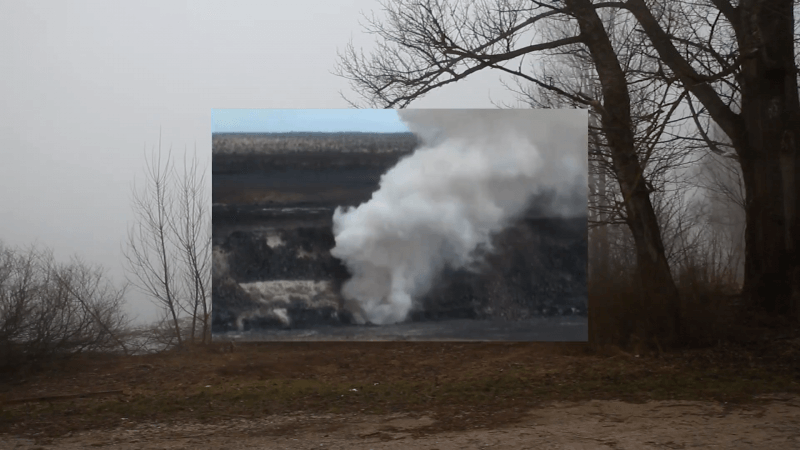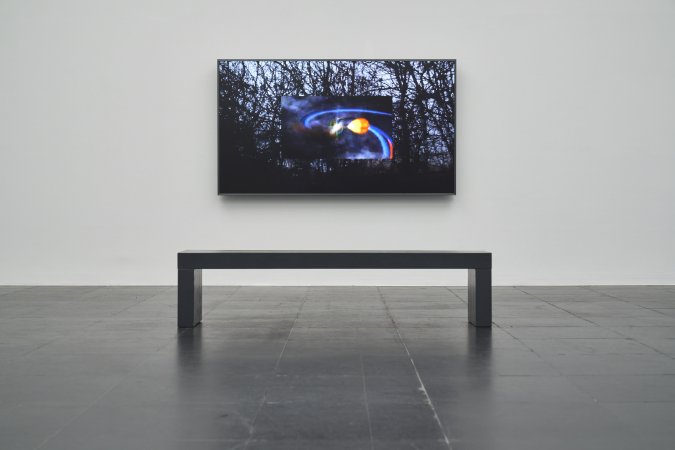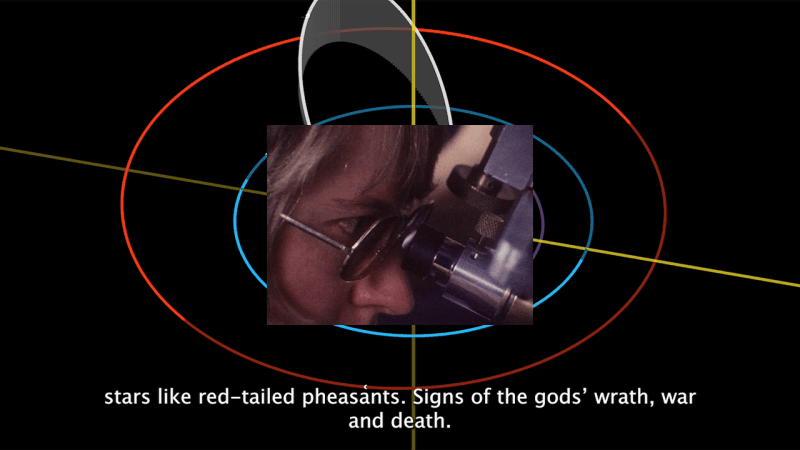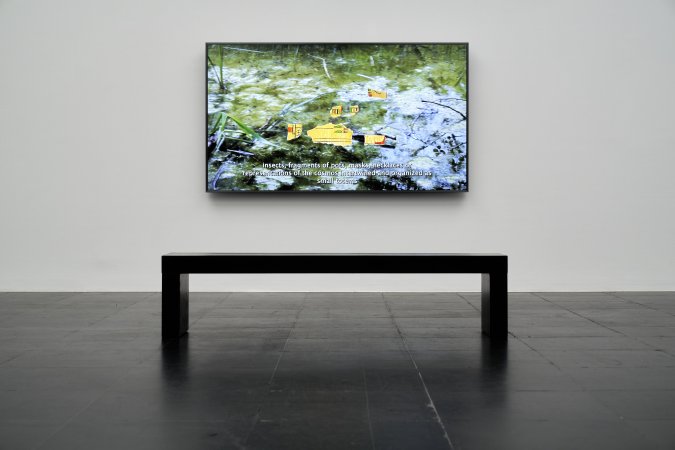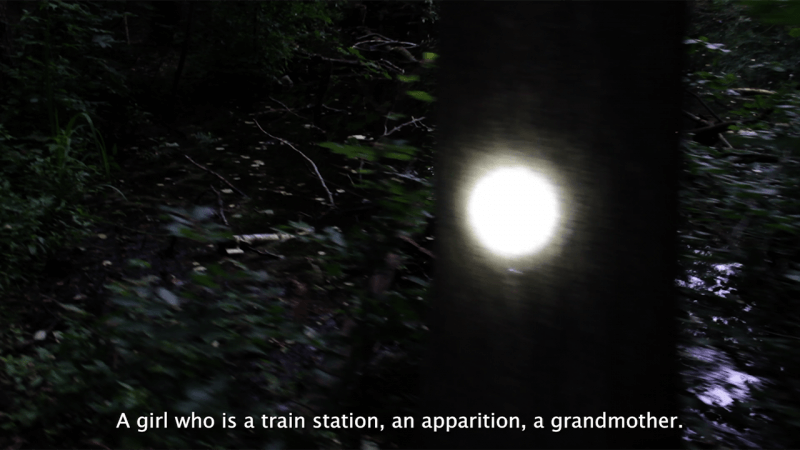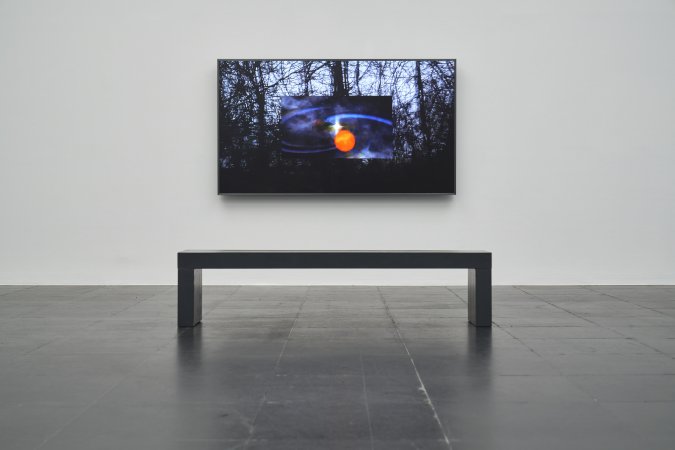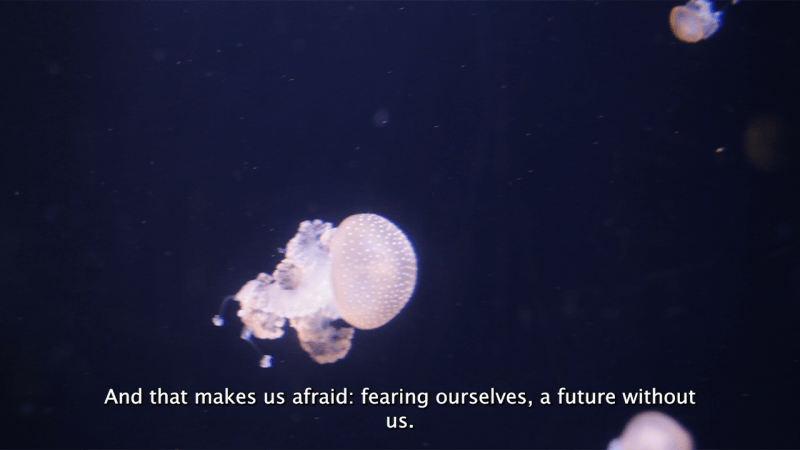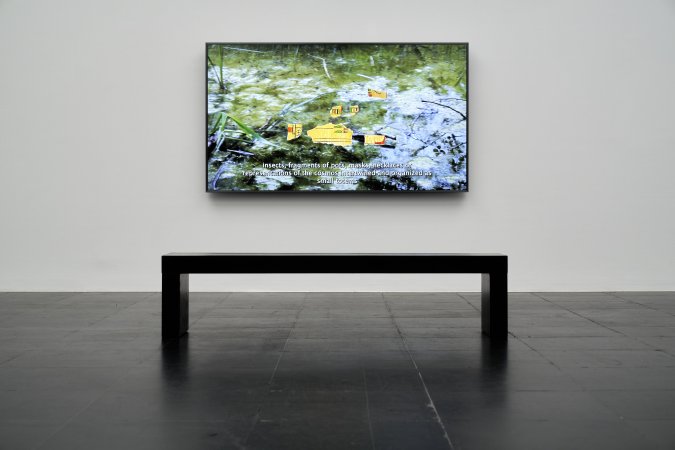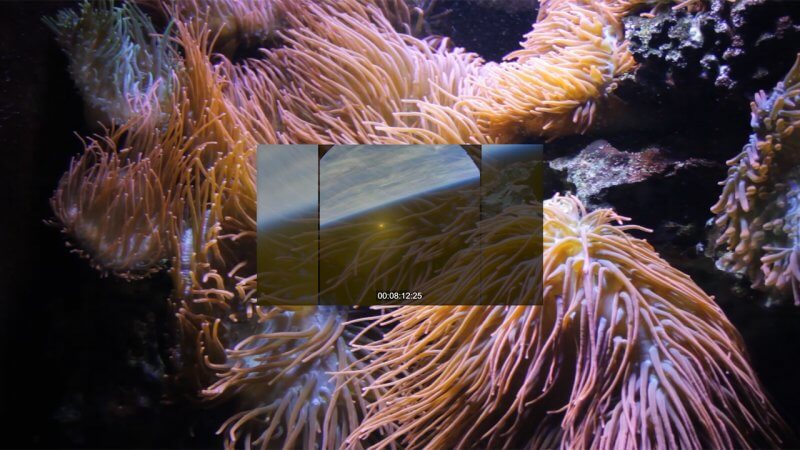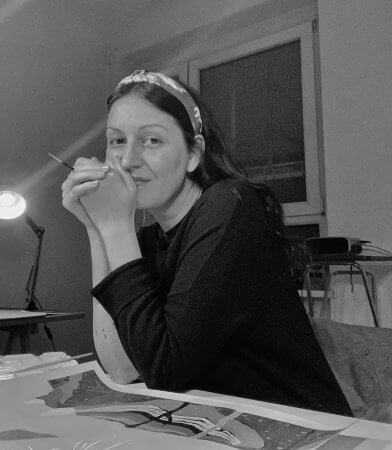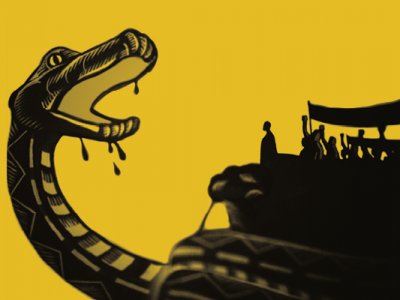Regina de Miguel
Intoxicated waters, never-seen-before comets and a meeting of suicides, 2021
HD video, 42 min
Soundtrack Lucrecia Dalt
Courtesy the artist
Chronicles of a medium
Regina de Miguel has developed an interdisciplinary cinematographic and artistic practice: hybrid films and projects such as installations, drawings, sculptures and photographs. With these, she creates complex narratives resulting from her research in scientific and cultural institutions, archives, as well as through her expeditions to the most remote locations of the Anthropocene planet: deserts, barely inhabited territories and extraction sites, such as mines.
In her works she uses texts – the writing of stories – and the performative – sound, voice, music and song – to tackle thematically links between current discourses in the philosophy of science, biopolitics, film and literature. From a base of ecofeminism and concerns about geopolitical and technological developments, de Miguel deploys resources from speculative fiction, the horror genre and science fiction, which open new theoretical perspectives and experiences.
In her early pieces Nouvelle Science Vague Fiction, 2011, and Voces de mundos que se desvanecen (Voices from vanishing worlds), 2013, the artist already defines the key elements of her artistic practice. She questions the supposed objectivity of scientific methods, of discourses and subjects their opaque language to critical analysis. De Miguel works with scientific and cultural objects, revealing what is fictional in them. Other elements that would become recurrent in her career also appear in her early works: the voices of characters in her films, who are all female, whether human, robotic or of an ambiguous nature. Women in de Miguel’s films are archetypes that run as mythical and ancestral figures through all periods of history. Further elements of her narratives are the precision of language in the description of everything that exists, the names that contain within them a story and specific connotations that avoid generalisations.
The artist explains that in Intoxicated waters, never-seen-before comets and a meeting of suicides ‘the protagonist spends her days waiting for a new mission. However, this one will not be assigned to her directly, but rather through dialogue with different human and non-human actors who populate the planet she accidentally inhabits. She befriends an old woman with whom she discovers that swamps are places where voices from the past return. In this way she meets a group of suicides: Anne Sexton, Sarah Kane, Dalida, Antonieta Rivas Mercado, Alejandra Pizarnik, Sylvia Plath, Jean Seberg, Ana Cristina César and Chantal Akerman, the unknown woman of the Seine. (They are the beloved dead heroines of the artist.) A choral song makes it clear that these suicides represent a failure of social cohesion and a consequence of failing to listen, a lack of mutual attention. Later the protagonist communicates with an abandoned radio telescope from whom she learns how the fundamental elements for the formation of life were found in comet 67P; how the probe that inhabited this primordial brick of the cosmos also performed a suicidal manoeuvre by crashing into the surface while broadcasting it live. The radio telescope expresses its sorrow to have witnessed scientific events that explain the formation and origin of life, but not to have understood how the moment of annihilation arrived on planet Earth. At the end of the film, the protagonist begins to unravel connections during a night walk. Animate and inanimate beings begin to form a whole, a chorus that determines the certainty of her next mission.’
De Miguel’s film contains discourses and speculations of Donna Haraway, Rosi Braidotti, Isabelle Stengers, Lynn Margullis or Eduardo Viveiros de Castro. Their voices are condensed in the closing song of the film. This soundtrack was made in collaboration with the singer and composer Lucrecia Dalt (*1980, Pereira, CO) who often participates in de Miguel’s pieces and creates atmospheres that generate dream-like soundscapes:
‘There is a rose growing which is a snail and a quartz. A bottle that is a river and a flame. A perfume that is a fingernail and a copper wire. A bone that is a clay pot that is cheese and wine. A bread that is a bridge and a late afternoon. A house that is a train and a grave. A war that is skin and fish. A lion that is a door and a coat. A garbage dump that is a swimming pool and a palm tree…’
Science fiction narration underpins the powerful imaginary of Regina de Miguel’s desolate, strange landscapes, but hers is not a dystopian, nihilistic or reactionary fiction. Faced with ‘a world that leaves a suicide note’, the protagonist receives messages from parallel universes, from other times and places: ‘The more remote, the more urgent the question’.
In De Miguel’s story, the assumption of uncertainty, vulnerability, fragility, of listening, and empathy operate as a form of resistance and art is the medium for this. Perhaps the most disturbing thing about this chronicle, this detailed report, is that it has no specific addressee, but concerns us all. The end remains open.
Regina de Miguel (*1977, Málaga, ES) is known for her filmmaking and interdisciplinary artistic practice that combine research and the development of processes that result in the production of knowledge, films, and hybrid projects. One of the main discursive threads in de Miguel’s work is the critical analysis of the supposed objectivity of scientific devices of representation and the conditions of production of scientific knowledge. She presented her work in solo exhibitions in institutions such as The Green Parrot, Barcelona (ES); C3A, Córdoba (ES); Arte Santa Monica, Barcelona (ES), Maisterravalbuena, Madrid (ES) and Kunsthalle Sao Paulo, Ghent (BE). Her filmography has been shown in numerous museums and institutions internationally and she recently contributed to the volume 140 Artists’ Ideas for Planet Earth (2021), edited by Hans Ulrich Obrist and Kostas Stasinopoulos. Her work is held in several public and private collections, including the Thyssen-Bornemisza Art Contemporary, Madrid (ES) and the Museo Nacional Centro de Arte Reina Sofía, Madrid (ES).

